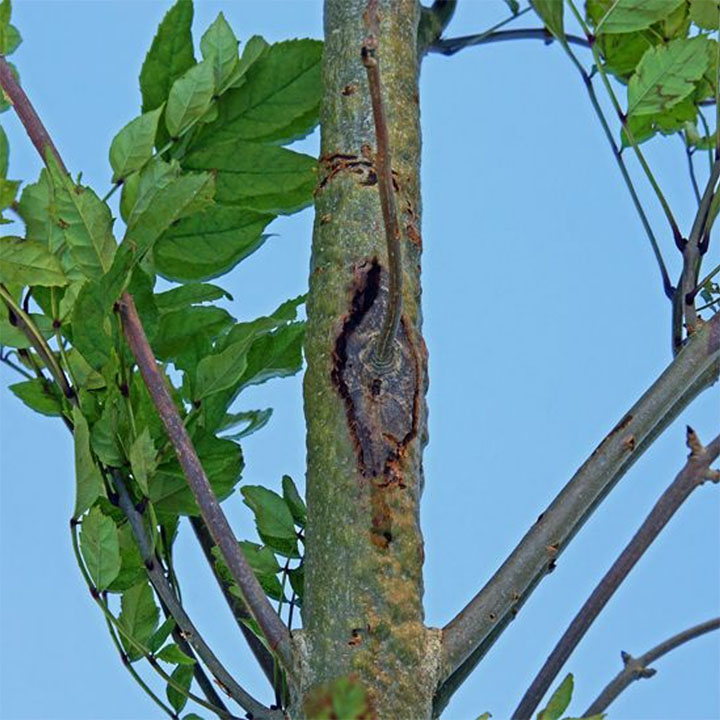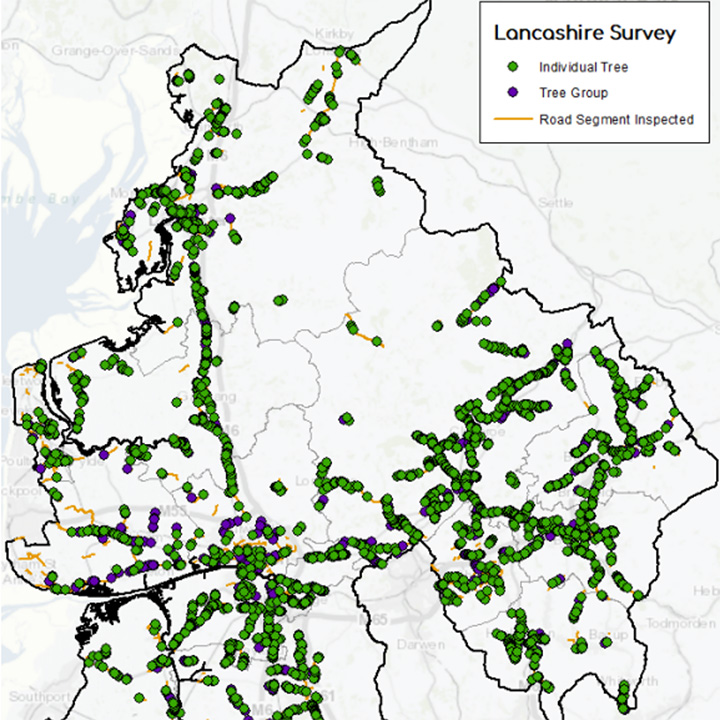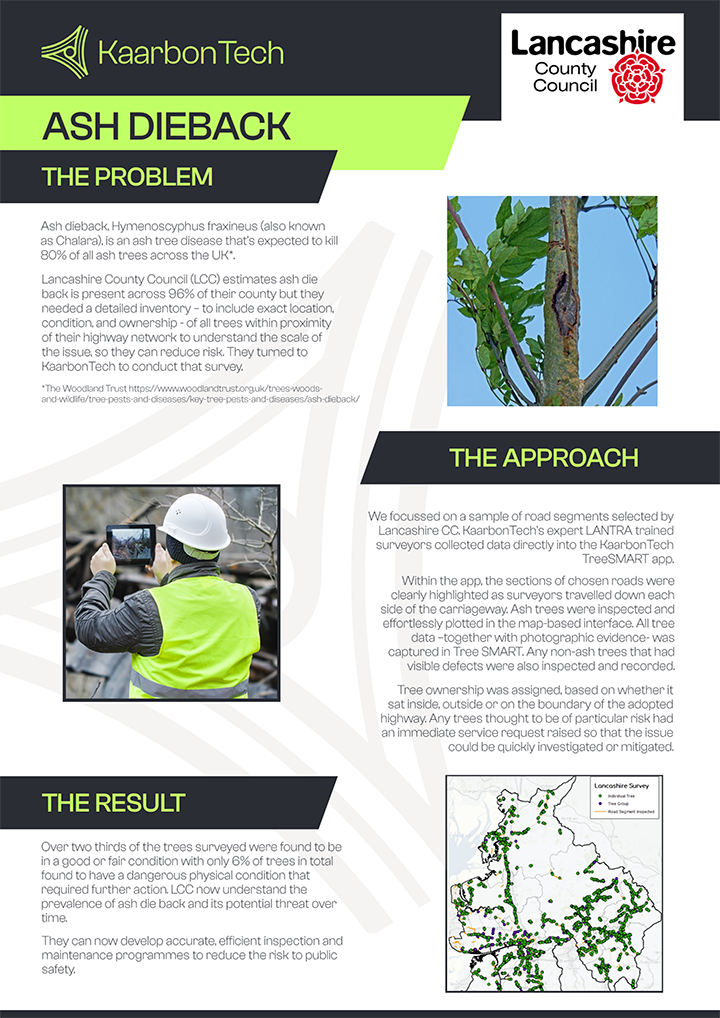Lancashire County Council had an Ash dieback problem but needed a survey to quantify the number of trees affected.
Ash dieback, Hymenoscyphus fraxineus (also known as Chalara), is an ash tree disease that’s expected to kill 80% of all ash trees across the UK*. Lancashire County Council (LCC) estimates ash dieback is present across 96% of their county but they needed a detailed inventory – to include exact location, condition, and ownership - of all trees within proximity of their highway network to understand the scale of the issue, so they can reduce risk. They turned to KaarbonTech to conduct that survey.

KaarbonTech surveyors undertook a detailed tree inventory loading the data into Tree SMART.
We focussed on a sample of road segments selected by Lancashire CC. KaarbonTech’s expert LANTRA trained surveyors collected data directly into the KaarbonTech TreeSMART app. Within the app, the sections of chosen roads were clearly highlighted as surveyors travelled down each side of the carriageway. Ash trees were inspected and effortlessly plotted in the map-based interface. All tree data –together with photographic evidence- was captured in Tree SMART. Any non-ash trees that had visible defects were also inspected and recorded. Tree ownership was assigned, based on whether it sat inside, outside or on the boundary of the adopted highway. Any trees thought to be of particular risk had an immediate service request raised so that the issue could be quickly investigated or mitigated.

Lancashire County Council now understands the full extent of its diseased tree problem and is able to plan its programme based on quality data.
Over two thirds of the trees surveyed were found to be in a good or fair condition with only 6% of trees in total found to have a dangerous physical condition that required further action. LCC now understand the prevalence of ash die back and its potential threat over time. They can now develop accurate, efficient inspection and maintenance programmes to reduce the risk to public safety.

"Completing this survey and using geospatial data will allow better estimation of budget requirements for removing or pruning ash trees, that pose high risk to the public.
"
